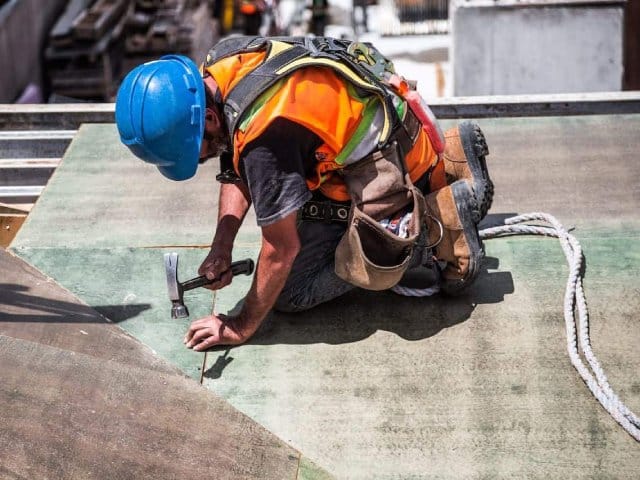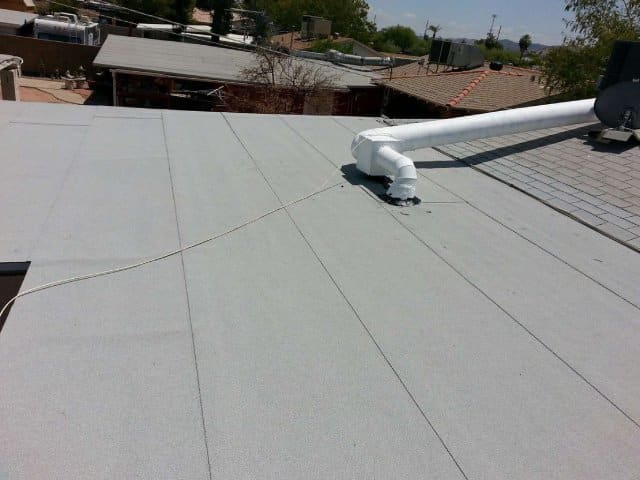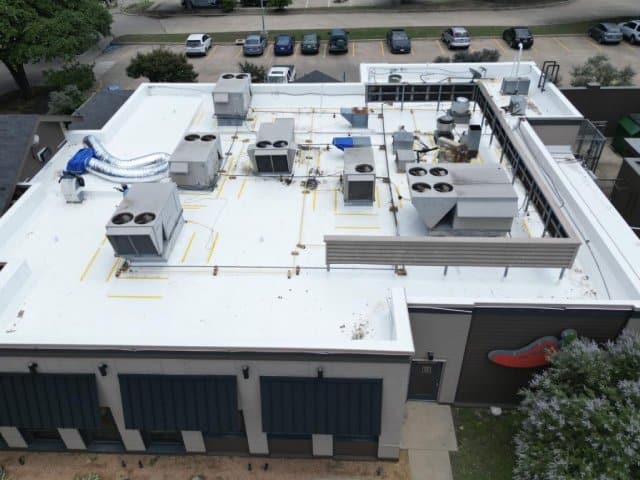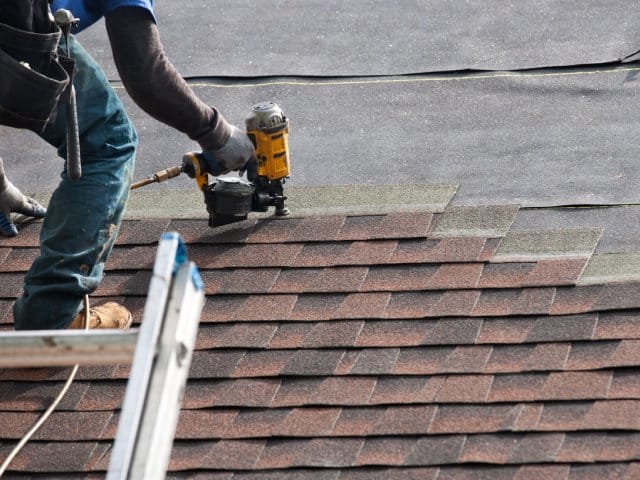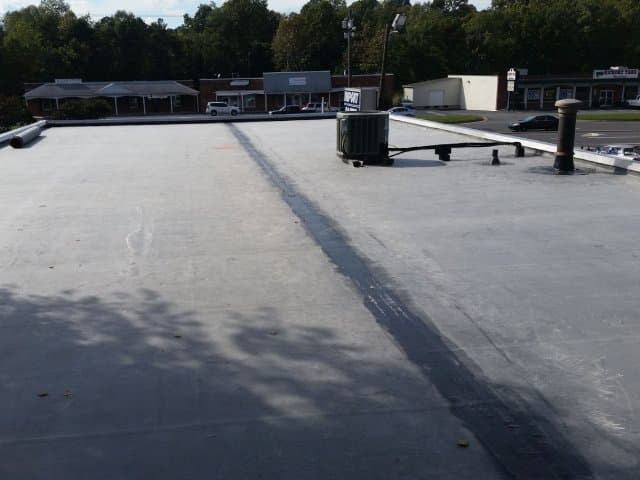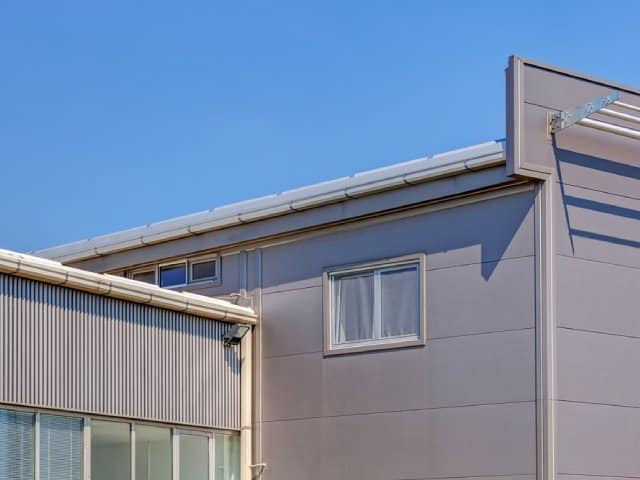Understanding the Basics of Commercial Roofing in Fayetteville, AR
Choosing the right roofing material for your commercial building is a critical decision that can affect the long-term performance, energy efficiency, and overall durability of your roof. Two of the most popular options for commercial roofing are EPDM roofing and TPO roofing. Both materials offer distinct advantages, but which one is the better fit for your property?
When it comes to commercial roofing, durability and efficiency are key. Flat roofs are common in commercial settings, and materials like EPDM and TPO are widely used because they meet these demands. These single-ply membranes provide weather protection, energy efficiency, and low maintenance requirements, but their differences can make one more suitable for certain projects than the other.
In this article, we’ll break down the differences between EPDM and TPO to help you make the right choice for your building in Fayetteville, AR.
What is EPDM Roofing? A Reliable Solution for Flat Roofs
EPDM roofing, or Ethylene Propylene Diene Monomer, is a synthetic rubber membrane that has been a reliable choice for flat and low-slope roofs for decades. Known for its flexibility and weather resistance, EPDM is especially popular in areas where temperature fluctuations are common. It is a durable material that can withstand the test of time, making it a go-to option for many roofing contractors.
The Composition of EPDM Roofing: What Makes It Durable
EPDM is made from a blend of synthetic rubber, which gives it its durability and flexibility. It is typically available in large sheets that are either black or white. The black version of EPDM absorbs heat, which can be beneficial in colder climates, while the white version reflects sunlight, offering energy savings in warmer regions. EPDM’s rubber-like properties make it highly resistant to ozone, UV radiation, and harsh weather conditions, ensuring a long-lasting roof.
What is TPO Roofing? The Rising Star in Commercial Roofing
TPO roofing, or Thermoplastic Polyolefin, has gained popularity in recent years as a more energy-efficient alternative to traditional roofing materials. TPO is a single-ply membrane that is known for its reflectivity and ability to reduce cooling costs. This material has become a favorite among building owners who are looking for a cost-effective solution with modern benefits.
The Composition of TPO Roofing: A Modern Alternative to EPDM
TPO is made from a blend of thermoplastic materials, which are heat-welded during installation to create a watertight seal. Unlike EPDM, which comes in black or white, TPO is almost always white and highly reflective, making it a great choice for energy-conscious businesses. The membrane is designed to resist punctures, tears, and chemical exposure, providing excellent protection for your building.
Key Differences Between EPDM and TPO Roofing: Which One Fits Your Building?
- Weather Resistance: How EPDM and TPO Perform in Harsh Conditions
- EPDM: Best in areas with extreme temperatures; flexible rubber material expands and contracts without cracking.
- TPO: Highly resistant to weather with heat-welded seams that protect against water infiltration, ideal for regions with heavy rain.
- Energy Efficiency: Why TPO Roofing Wins for Reflectivity
- EPDM: Black EPDM absorbs heat, while white EPDM reflects sunlight, but less effective than TPO.
- TPO: Superior reflectivity thanks to its white surface, making it excellent for reducing cooling costs in hot climates.
- Durability Comparison: Which Roofing Material Lasts Longer?
- EPDM: Performs better in cold climates, resisting punctures and extreme temperature fluctuations.
- TPO: Withstands heat better, with stronger seams due to heat-welding, providing extra durability in warmer regions.
- Installation Process: What to Expect with EPDM vs. TPO
- EPDM: Installed using adhesives with large sheets; quicker but requires precise work for long-term performance.
- TPO: Installed by heat-welding seams, which creates a watertight seal and makes it highly resistant to leaks.
- Maintenance Requirements: Which Roofing Option is Easier to Care For?
- EPDM: Easy to repair due to flexible rubber composition; generally low maintenance.
- TPO: Slightly easier due to heat-welded seams, which are more resistant to leaks.
- Cost Comparison: Understanding the Price Difference Between EPDM and TPO
- EPDM: More affordable upfront, with a simpler installation process.
- TPO: Higher initial cost, but can save money in the long run through energy efficiency.
- Environmental Impact: Is EPDM or TPO Better for the Planet?
- EPDM: Fully recyclable, with a long lifespan that reduces material waste over time.
- TPO: Superior energy efficiency lowers overall energy consumption, making it an eco-friendly choice in warmer climates.
EPDM and TPO Commercial Roofing Comparison Table
| Feature | EPDM Roofing | TPO Roofing |
| Material Composition | Synthetic rubber (Ethylene Propylene Diene Monomer) | Thermoplastic Polyolefin (a blend of plastic and rubber) |
| Durability | Excellent flexibility, especially in cold climates | Heat-welded seams for extra strength in hot climates |
| Weather Resistance | Highly resistant to extreme temperatures and weather | Great for areas with heavy rain; heat-welded seams prevent leaks |
| Energy Efficiency | Black EPDM absorbs heat; white EPDM reflects sunlight | Superior reflectivity reduces cooling costs in hot climates |
| Installation | Adhered to the roof with adhesive | Heat-welded seams create a watertight seal |
| Maintenance | Low-maintenance; easy to repair if damaged | Low-maintenance; welded seams reduce the potential for leaks |
| Lifespan | 20-30 years with proper maintenance | 20-30 years with proper maintenance |
| Cost | Lower initial cost | Higher upfront cost, but potential energy savings |
| Environmental Impact | Fully recyclable, long lifespan reduces replacements | Highly energy-efficient, reducing overall energy consumption |
| Best For | In cold climates, flexibility needed | Warm climates, energy-conscious businesses |
Choosing the Right Roofing Contractor for Your EPDM or TPO Roof Installation in Fayetteville, AR
Whether you choose EPDM or TPO roof for your commercial building, proper installation is key to ensuring your roof performs well over the long term. At United Roofing & Waterproofing, we specialize in both EPDM and TPO roofing installations. Our team of experienced professionals in Fayetteville, AR is here to guide you through the process, from material selection to installation and maintenance. We’re committed to delivering high-quality workmanship and outstanding customer service.
Conclusion: Making the Right Choice for Your Commercial Roof in Fayetteville, AR
Both EPDM roofing and TPO roofing offer excellent benefits for commercial roofing projects, but your choice will ultimately depend on your building’s specific needs. EPDM is a tried-and-true material that excels in cold weather, while TPO offers superior energy efficiency in warmer climates. Regardless of your choice, you’ll need a reliable roofing contractor to ensure the job is done right. If you’re ready to upgrade or install a new commercial roof, contact United Roofing & Waterproofing in Fayetteville, AR today. Our expert team is here to help you choose the best roofing material for your building and provide a professional installation you can trust. Give us a call or visit our website to schedule a consultation!
